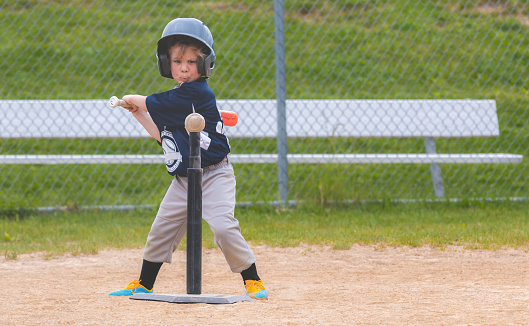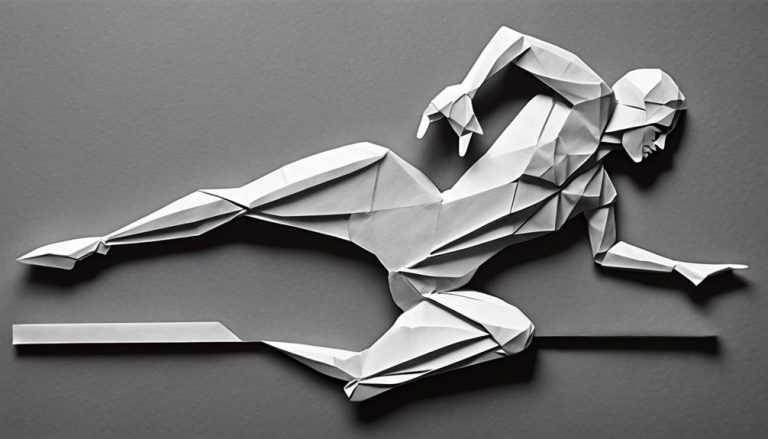General Rules of Luge
Are you aware of the intricate guidelines that govern the exhilarating sport of luge? From the necessary equipment to the precise racing techniques, there are key elements that every luge enthusiast must adhere to. Understanding these general rules is important for ensuring fairness and safety in this high-speed competition. As you navigate through the complexities of luge regulations, you will gain a deeper appreciation for the skill and precision required in this thrilling winter sport.
Equipment Requirements
When luge racing, you must guarantee that your equipment meets the specific requirements set by the sport's governing body. Safety gear is paramount in luge racing to guarantee your protection during high-speed descents. The most important safety gear includes a helmet, visor or goggles, gloves, a skin-tight racing suit, and sturdy footwear. Helmets must be certified by relevant safety standards and fit securely to prevent any movement during your slide. Visors or goggles shield your eyes from wind, debris, and glare, enhancing visibility. Gloves provide grip and protection, while the racing suit minimizes air resistance and aids in aerodynamics. Proper footwear is important for stability and control on the sled.
In addition to safety gear, your training regimen plays a significant role in luge racing. Developing strength, agility, and core stability is important to handle the G-forces experienced during sharp turns and high speeds. Endurance training helps improve your stamina for longer races, while practicing sled control on various tracks enhances your technical skills. Mental preparation is equally important to maintain focus and composure during intense races. Regular practice, under the guidance of experienced coaches, is key to honing your luge skills and achieving success in this exhilarating sport. Remember, safety gear and a disciplined training regimen are the foundation for a successful luge racing career.
Start Procedures
To initiate a luge run successfully, make sure you are positioned correctly at the starting line with your sled in hand. Before you push off, it's important to follow these technique tips, safety precautions, starting strategies, and body positioning:
- Technique Tips: As you crouch down at the starting line, keep your body low to minimize air resistance. Make sure your hands are gripping the sled handles firmly, and your shoulders are aligned with your sled's direction. This helps you maintain control as you accelerate.
- Safety Precautions: Double-check that your helmet is securely fastened and that all other safety gear is in place. Confirm that there are no obstructions on the track and that the track officials have signaled that it's safe to start. Safety should always be the top priority in luge.
- Starting Strategies and Body Positioning: Visualize your initial movements before pushing off. Focus on explosive power from your legs to propel yourself forward. As you push the sled, smoothly shift your body weight onto it while maintaining a streamlined position. Your head should be neutral, and your gaze fixed ahead to anticipate the track's curves.
Racing Techniques
Efficiency plays an important role in mastering luge racing techniques, optimizing speed and control on the track. Body positioning is vital in luge racing. To achieve maximum speed and control, you must maintain a streamlined posture with your head and shoulders low, close to the sled. Your legs should be together and extended, helping to minimize drag and increase aerodynamics. By keeping your body aligned and stable, you can navigate the track with precision.
Steering techniques are another essential aspect of luge racing. To steer effectively, you need to shift your body weight subtly to the left or right. These subtle movements allow you to adjust your trajectory and stay on course. Beginners often struggle with oversteering, which can lead to loss of speed and control. Practice is key to mastering the art of steering in luge.
Aerodynamics greatly impact your speed in luge racing. Smooth, controlled movements and proper body positioning help reduce air resistance, allowing you to glide effortlessly down the track. Cornering strategies are vital for maintaining speed through turns. By leaning into the curves and applying gentle pressure to the sled, you can navigate corners smoothly and efficiently. Remember, mastering these racing techniques takes time and practice, but with dedication, you can improve your performance on the luge track.
Course Layout
Exploring the luge track successfully requires a solid understanding of the layout and its various components. The course challenges you to navigate through twists and turns while maintaining precise control over your sled. Here are three key elements of a luge course layout:
- Elevation Changes: As you speed down the track, be prepared for sudden drops and steep inclines that will test your ability to adjust your body position swiftly. The varying elevations add an element of thrill and require you to anticipate the track ahead.
- Curves and Corners: Negotiating tight corners is a significant part of the luge experience. The course will throw sharp curves at you, demanding precise steering to avoid skidding or hitting the walls. Mastering the art of maneuvering through these bends is critical for a successful run.
- Straightaways and Timing Gates: Between the challenging curves, you'll encounter straight segments where maintaining your speed and body position is essential for the best possible timing accuracy. Timing gates positioned along the track measure your progress and adherence to the course. Achieving the best possible timing through these gates is essential for competitive success.
To excel in luge, you must conquer the course challenges with finesse and accuracy in timing to achieve the fastest possible run. Understanding the layout and preparing for its intricacies will give you a competitive edge on race day.
Judging Criteria
When it comes to judging luge performances, three main points are considered: Speed and Control, Line and Technique, and Presentation and Style. These aspects play an important role in determining the overall quality of a run. Judges carefully assess how well athletes maintain control, execute precise lines, and showcase their style on the track.
Speed and Control
In evaluating luge performances, the judges carefully assess the speed and control exhibited by the athletes as they navigate the icy track. To provide a clearer picture for the audience, consider the following:
- Silent Speed: Picture the athlete swiftly gliding down the track, creating minimal noise as they cut through the icy curves with precision.
- Graceful Control: Imagine the athlete's body movements, subtle yet powerful, as they maintain a perfect balance between speed and control, showcasing their mastery over the sled.
- Effortless Technique: Envision the smooth shifts between corners, where the athlete's technique shines, demonstrating continuous improvement in their ability to handle the sled with finesse.
Line and Technique
To accurately assess the performance of luge athletes, judges focus on evaluating the precision and finesse displayed in their path and technique on the icy track. Body positioning plays a vital role in luge, as athletes need to maintain a streamlined posture to minimize air resistance and maximize speed. Steering technique is another key aspect, where subtle adjustments can make a significant difference in moving the sharp curves of the track efficiently. Weight distribution is essential for maintaining balance and control during high-speed descents, allowing athletes to maneuver with precision. Achieving an aerodynamic form is fundamental for reducing drag and optimizing acceleration. By mastering these elements of line and technique, luge athletes can enhance their performance and aim for success on the icy course.
Presentation and Style
Judges evaluate the presentation and style of luge athletes based on their execution of movements and overall performance on the icy track. When judging presentation techniques and performance styles, judges look for:
- Body Position: Observing how well athletes maintain a streamlined posture to minimize air resistance and maximize speed.
- Balance and Control: Noting the ability of athletes to smoothly navigate tight corners and challenging sections of the track with precision.
- Consistency: Evaluating the uniformity of movements throughout the entire run, ensuring a cohesive and polished performance that reflects mastery of the sport.
Safety Protocols
When it comes to safety protocols in luge, key aspects include equipment inspection procedures, training, and preparation, as well as having a well-thought-out emergency response plan. These points are critical in ensuring the safety of luge athletes during training and competitions. By adhering to these protocols, risks can be minimized, and the sport can be enjoyed with peace of mind.
Equipment Inspection Procedures
Ensuring the safety and integrity of luge equipment is a critical step in the sport, with detailed inspection procedures in place to uphold strict safety protocols.
- Thorough Inspection Checklist: Before each run, luge equipment must pass through a rigorous checklist to make sure all components are secure and functioning correctly. This includes checking the sled's structure, steering mechanisms, and braking systems.
- Adherence to Safety Standards: Luge equipment must meet specific safety standards set by governing bodies to guarantee the protection of athletes during training and competitions.
- Regular Equipment Maintenance and Performance Testing: Continuous maintenance and performance testing are essential to identify any potential issues early on and make certain that the equipment operates at its peak efficiency for best performance on the track.
Training and Preparation
To maximize safety during luge training and preparation, adherence to strict safety protocols is paramount. Mental preparation plays a significant role in getting ready for the challenges of luge. Visualizing the track, the turns, and the speed can help you anticipate movements and react effectively. Setting clear goals for each training session enhances focus and motivation. Physical conditioning is essential to make sure your body can withstand the demands of the sport. Regular strength and flexibility training are key to preventing injuries. By following visualization techniques, goal setting, and maintaining peak physical condition, you can enhance your luge training and preparation, setting yourself up for success on the track.
Emergency Response Plan
In case of emergencies during luge training or competition, swiftly executing the established Emergency Response Plan is crucial to guarantee the safety of all participants. To make sure a prompt and effective response, the following strategies are essential:
- Emergency Drills: Regularly practicing emergency scenarios helps participants and staff react quickly and efficiently in real-life situations.
- Clear Communication: Establishing a clear communication protocol makes certain that everyone involved knows their roles and responsibilities during an emergency.
- Designated Response Teams: Assigning specific individuals or teams to handle different aspects of the emergency response plan streamlines decision-making and actions in high-stress situations.
Frequently Asked Questions
Are There Weight Restrictions for Luge Athletes?
If you're curious about weight restrictions for luge athletes, you'll find that these regulations aim to guarantee fairness and prevent any one competitor from gaining an unfair competitive advantage due to weight differences.
How Often Do Luge Tracks Need to Be Maintained?
To guarantee track safety and peak performance, luge tracks require regular maintenance. The frequency of maintenance varies but typically involves daily checks for ice conditions, track surface integrity, and safety measures.
Can Luge Athletes Compete in Multiple Events During a Competition?
Like a Swiss army knife, luge athletes showcase their versatility by competing in multiple events during a competition. This challenge tests their skills across various disciplines, pushing them to excel in different aspects of luge.
Are There Any Restrictions on the Type of Clothing Luge Athletes Can Wear During a Race?
You can wear specific safety gear like helmets, gloves, and suits designed for luge. However, there are restrictions on the size and placement of sponsor logos on your clothing to maintain fairness and prevent distractions.
How Do Luge Athletes Train for Races in Different Weather Conditions?
You gear up for training in various weather, ensuring equipment preparation suits the conditions. Mental focus sharpens as you adapt to different elements, mastering techniques in rain, snow, or sunshine.






